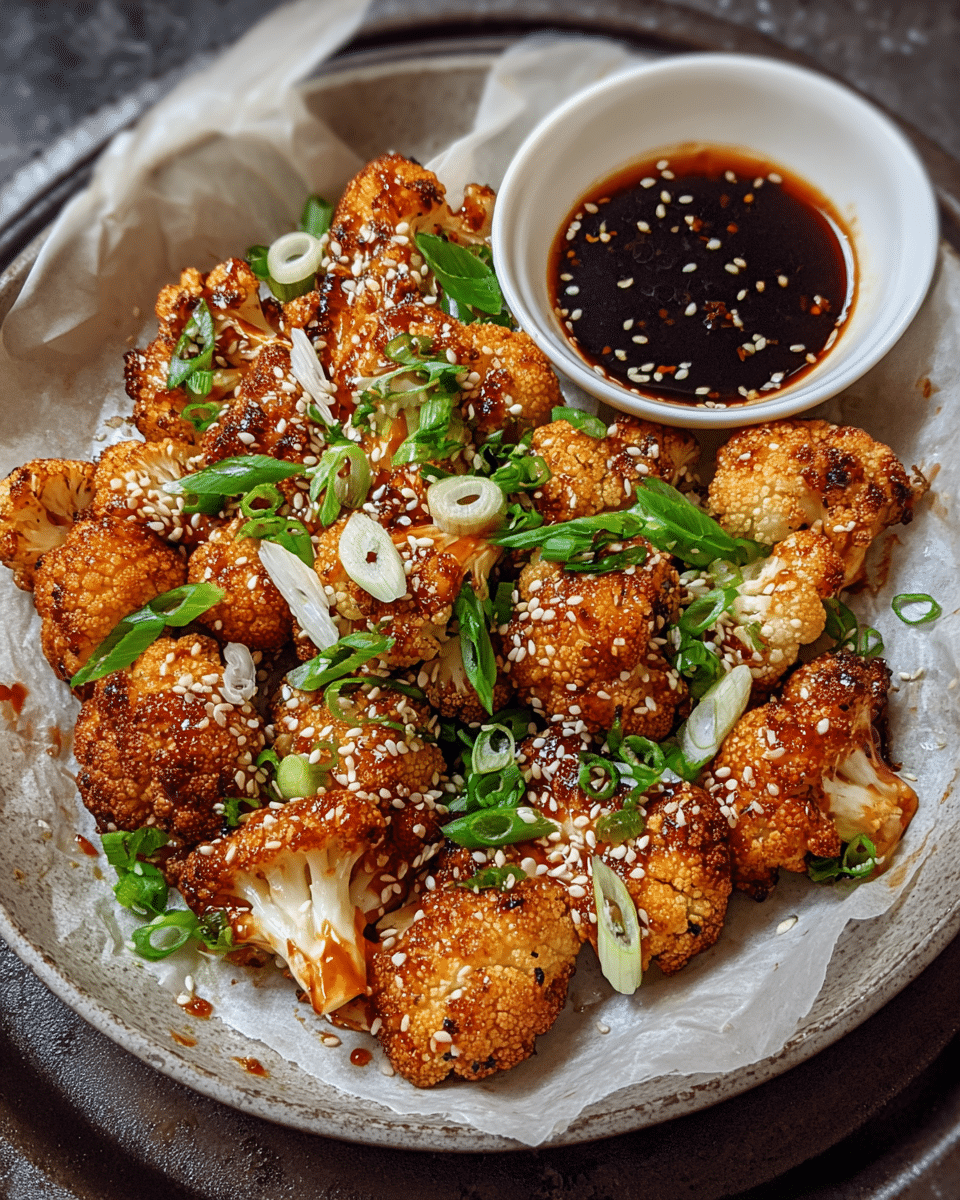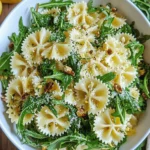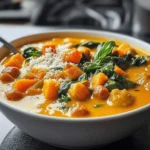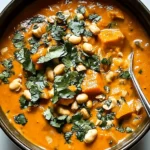The fusion of spicy Korean gochujang with tender roasted cauliflower makes this dish an irresistible favorite for weeknight dinners or party appetizers. It’s crispy, savory, sweet, and fiery all in one bite. The sesame and soy give it depth, while the honey balances it out beautifully.
This Korean Baked Cauliflower is plant-based comfort food at its finest. It’s a crowd-pleaser for vegans and omnivores alike and super simple to prepare. Serve it up with rice for a fulfilling main dish or plate it up at your next gathering for a punch of Korean flair.
Full Recipe:
Ingredients:
For the Cauliflower:
-
1 large head of cauliflower, cut into florets
-
2 tablespoons olive oil
-
½ teaspoon salt
-
½ teaspoon black pepper
For the Sauce:
-
2 tablespoons gochujang (Korean red chili paste)
-
2 tablespoons soy sauce (use tamari for gluten-free)
-
1 tablespoon sesame oil
-
1 tablespoon honey or maple syrup
-
1 teaspoon rice vinegar
-
2 garlic cloves, minced
-
1 teaspoon grated fresh ginger
For Garnish:
-
1 teaspoon toasted sesame seeds
-
2 green onions, sliced
Directions:
-
Preheat oven to 400°F (200°C).
-
In a large bowl, toss cauliflower florets with olive oil, salt, and black pepper until evenly coated.
-
Spread florets on a baking sheet in a single layer and roast for 25–30 minutes, flipping halfway, until golden and crispy.
-
Meanwhile, in a small bowl, whisk together gochujang, soy sauce, sesame oil, honey, rice vinegar, garlic, and ginger until smooth.
-
Heat the sauce in a small saucepan over medium heat for 3–5 minutes until slightly thickened.
-
Once cauliflower is roasted, drizzle with the sauce and gently toss to coat. Optionally, bake an additional 5 minutes for extra caramelization.
-
Garnish with sesame seeds and green onions.
-
Serve hot as a side dish, appetizer, or main with rice or noodles.
Prep Time: 10 minutes | Cooking Time: 35 minutes | Total Time: 45 minutes
Kcal: ~190 kcal per serving | Servings: 4 servings
Korean Baked Cauliflower: Bold Flavor, Plant-Based Power, and Korean Flair
In recent years, cauliflower has emerged as a culinary chameleon transforming from a humble vegetable to a superstar ingredient in kitchens around the world. One of the most vibrant and flavor-packed ways to enjoy it is through a Korean-inspired dish: Korean Baked Cauliflower.
This dish isn’t just a nod to modern plant-based eating; it’s also a flavorful fusion of global culinary techniques with the deep umami and fiery elements that define Korean cuisine. With its bold spices, crispy edges, and sticky-sweet glaze, Korean Baked Cauliflower has become a go-to favorite for vegans, vegetarians, and even meat-lovers looking for a flavorful alternative.
In this article, we’ll dive into the origins, flavor profile, health benefits, versatility, cultural relevance, and popularity of this dish and explore why it’s found a permanent place on modern tables.
A Fusion of Tradition and Modern Plant-Based Cuisine
Korean Baked Cauliflower doesn’t come from traditional Korean households, but it draws inspiration from a beloved staple: Korean Fried Chicken (also known as yangnyeom tongdak). This dish is known for its addictively crispy exterior, juicy interior, and spicy-sweet glaze. The cauliflower version reimagines the original by swapping the chicken for florets and baking instead of deep-frying, making it lighter, healthier, and entirely plant-based.
This clever twist is a perfect example of the global shift toward “fusion cuisine” where traditional flavors meet modern cooking techniques and dietary preferences. With more people embracing vegetarianism, veganism, and flexitarianism, dishes like Korean Baked Cauliflower reflect how cultural food heritage can be honored while adapting to evolving lifestyles.
The Flavor Profile: Sweet, Spicy, Umami, and Everything in Between
The true magic of Korean Baked Cauliflower lies in its layered and dynamic flavor profile. It’s bold and crave-worthy, striking a delicate balance between spicy, sweet, savory, and tangy.
At the heart of the sauce is gochujang, a fermented Korean chili paste that adds depth, heat, and an unmistakable umami punch. Gochujang is the soul of many Korean dishes used in everything from bibimbap to tteokbokki and it carries complex notes of spice, sweetness, and funk that no single-ingredient chili sauce can match.
Complementing the gochujang are soy sauce, honey or maple syrup, rice vinegar, and sesame oil. Together, they create a sticky glaze that caramelizes beautifully in the oven, clinging to the nooks and crannies of the roasted cauliflower. The flavor hits multiple taste receptors at once: sweetness from the syrup, heat from the chili paste, saltiness from the soy, and nuttiness from the sesame oil.
The final dish is crispy, tender, and deeply flavorful without any animal products, excessive oil, or heavy frying.
Cauliflower: A Nutrient-Packed, Low-Calorie Powerhouse
Beyond its incredible flavor and texture, this dish also scores high on the nutrition scale. Cauliflower is rich in:
-
Fiber, which aids digestion and keeps you full longer
-
Vitamin C, a powerful antioxidant that supports immunity
-
Vitamin K, which helps with bone health
-
Folate, essential for cell function and growth
It’s also low in calories and carbohydrates, making it ideal for those following weight management or keto-friendly diets (when sauce ingredients are adjusted accordingly).
When roasted, cauliflower develops a slightly nutty, sweet flavor and maintains a tender crisp texture that holds up well under thick sauces. That makes it a versatile base for intensely flavored recipes like this one.
Additionally, by baking instead of frying, the dish avoids excess fats and oils reducing calories while enhancing the natural sweetness and crispiness of the cauliflower.
Perfect for Meal Prep, Parties, and Weeknight Dinners
Korean Baked Cauliflower is one of those unicorn recipes that checks every box: it’s easy to prepare, visually stunning, endlessly versatile, and perfect for multiple occasions.
-
Weeknight dinners: It comes together in under an hour and pairs beautifully with steamed rice, noodles, or even inside lettuce wraps for a low-carb twist.
-
Appetizers: Serve in bite-sized portions with toothpicks and dipping sauces at a gathering.
-
Meal prep: Store leftovers in an airtight container, reheat in the oven or air fryer, and enjoy throughout the week.
-
Game day food: These crispy bites rival chicken wings in flavor and appeal without the meat.
Add a few quick garnishes like green onions, toasted sesame seeds, or a drizzle of spicy mayo and you’ve got a show-stopping dish that feels both comforting and elevated.
Easy to Customize for Every Diet
One of the major reasons this dish has risen in popularity is its flexibility and customizability. Whether you’re cooking for a vegan, someone with gluten intolerance, or a picky eater, this recipe can be easily adapted.
-
Gluten-free: Replace soy sauce with tamari or coconut aminos.
-
Vegan: Swap honey for maple syrup or agave nectar.
-
Low-sugar: Reduce or omit the sweetener and add a splash of citrus juice for balance.
-
Extra-spicy: Add chili flakes, sriracha, or diced jalapeños.
You can even switch out the cauliflower for other hearty vegetables like broccoli, Brussels sprouts, or tofu for a new twist using the same delicious sauce.
Global Appeal Meets Local Creativity
Part of the joy in making Korean Baked Cauliflower is how it blends global flavors with local ingredients. While gochujang and sesame oil are signature Korean pantry staples, they’re now widely available in most supermarkets or online making this dish accessible to cooks everywhere.
Additionally, its popularity on platforms like Pinterest, Instagram, and TikTok has introduced a wider audience to Korean flavors, encouraging more home cooks to experiment with Asian-inspired recipes. This has helped elevate once-niche ingredients into kitchen essentials.
Moreover, food bloggers and chefs have continued to reimagine the dish turning it into tacos, grain bowls, and even flatbread toppings. It’s a canvas for culinary creativity.
Why It’s a Plant-Based Favorite
At its core, Korean Baked Cauliflower offers what so many plant-based eaters seek: bold flavor, texture, and satisfaction all without animal products. Unlike many meatless meals that rely on neutral or soft ingredients, this dish delivers a crunchy bite and a flavor explosion.
It’s hearty enough to satisfy omnivores, yet wholesome and clean enough to appeal to health-conscious eaters. The fact that it doesn’t rely on highly processed meat substitutes also makes it a cleaner option for many plant-forward lifestyles.
For those transitioning to a more plant-based way of eating, this is a gateway recipe one that proves vegetables can be the main event, not just a side dish.
Conclusion:
Korean Baked Cauliflower is more than just another recipe it’s a reflection of how food evolves to meet the needs of our time. Rooted in Korean culinary traditions and adapted for today’s plant-based movement, it stands at the intersection of comfort, flavor, and nutrition.
Whether you’re looking to spice up your dinner routine, embrace a meatless Monday, or simply enjoy something a little different, this dish delivers. It’s quick to make, packed with character, and open to countless creative variations.
As more home cooks explore fusion dishes and global flavors, Korean Baked Cauliflower is poised to become a modern classic one bite at a time.






